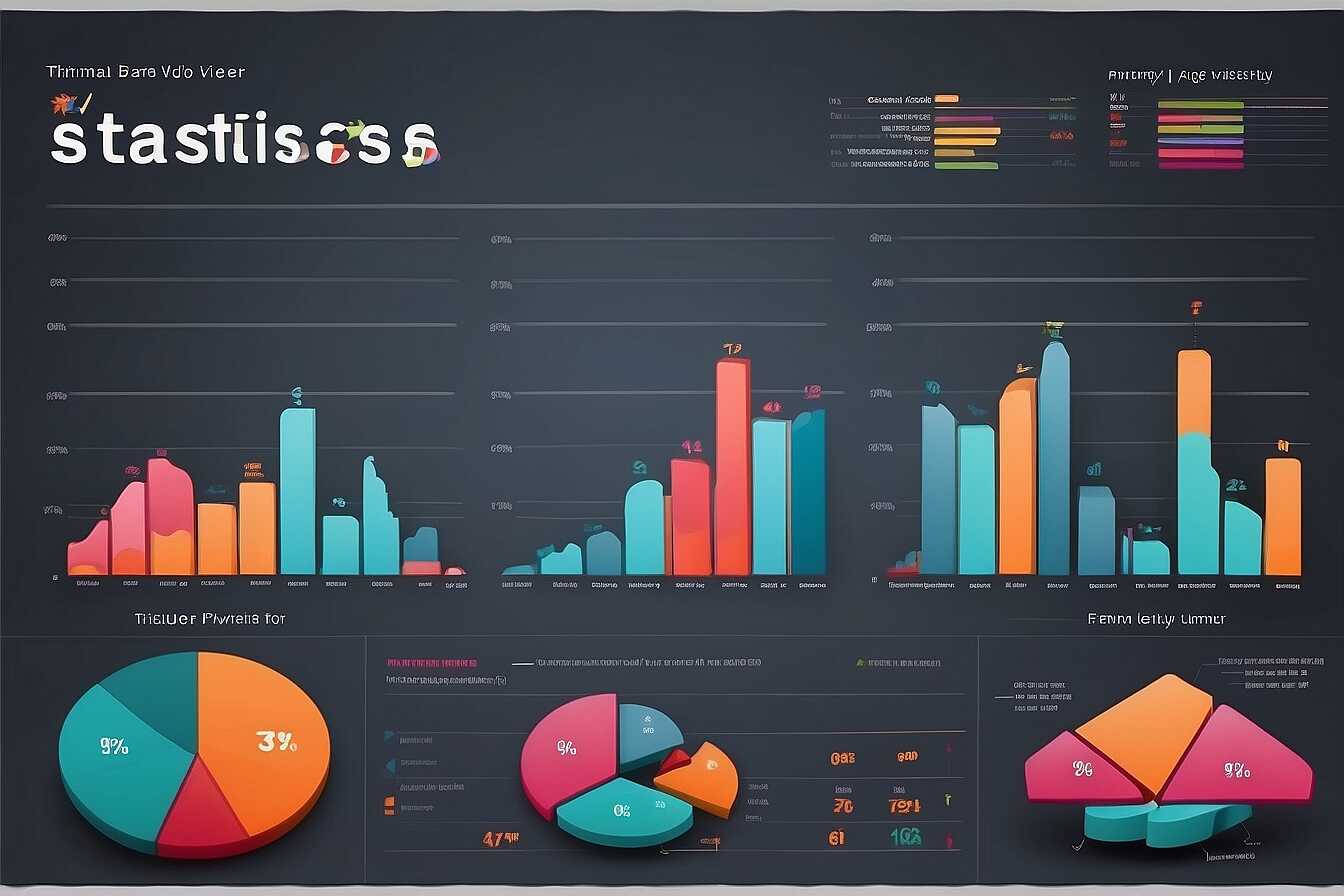Identifying keyword gaps in your content strategy is crucial for achieving SEO success.
By uncovering these gaps, you can target missed opportunities that may significantly increase your traffic.
At Metrics Rule, we specialize in guiding businesses toward effective SEO practices, including keyword gap analysis.
This process not only enhances your visibility but also ensures your content aligns with user intent, driving conversions and traffic.
Understanding Keyword Gaps and Their Impact on SEO
Keyword gaps refer to the missing opportunities in your content strategy, where your website does not rank for certain relevant search terms. These gaps can significantly affect your SEO performance because they indicate areas where competitors might be outperforming your website. By understanding and identifying these gaps, you can enhance your content strategy, enabling your site to capture additional organic traffic. Research shows that addressing keyword gaps can improve your site’s organic traffic by 20% or more, making it an essential step in SEO growth.
How to Identify Keyword Gaps in Your Content
Identifying keyword gaps requires a structured approach to keyword research. Start by comparing your keyword rankings with those of your competitors. Utilize tools to analyze which relevant keywords drive traffic to their sites but not yours. Incorporate insights from Google Analytics to see search terms that bring visitors to their pages. This method will uncover valuable opportunities that can improve your content strategy. By focusing on these keyword gaps, you can develop targeted content that meets user intent, thus enhancing your site’s performance in search engine results.
Identifying Missed Keyword Opportunities in Your Current Content
Analyzing your existing content is essential to finding missed keyword opportunities. Start by reviewing your current content for relevancy to user searches. Use tools like Google Analytics and keyword research tools to gauge the performance of your content. These tools help you assess keywords that are driving traffic and those that are being overlooked. Look for terms that competitors rank for but you don’t. Moreover, utilize AI-driven tools to analyze your content against current search trends. Many websites miss around 30-40% of high-traffic keywords that could enhance their visibility in search engines.
Effective Tools for Keyword Gap Identification
To effectively identify keyword gaps, consider using specialized SEO tools like Ahrefs, SEMrush, or Moz. These platforms provide detailed insights into your content, helping you discover underutilized keywords. Additionally, they enable you to compare your content against competitors, showing what others target successfully. Regularly testing and refining your keyword list improves your content optimization strategy. Remember, the right tools make it much easier to uncover valuable keyword opportunities that can boost your site’s performance and enhance search engine visibility.

Effective Techniques for Comprehensive Keyword Research
When embarking on keyword research, leveraging the right tools is essential. Tools like Google Keyword Planner, Ahrefs, and SEMrush provide valuable insights into search volume, competition, and keyword difficulty. They help identify keyword gap analysis, allowing you to focus on areas underserved by your current content. Different industries have unique approaches to keyword research. For instance, e-commerce may prioritize product-related keywords, such as “best running shoes,” while local businesses focus on geographic keywords like “Vancouver coffee shops.” Typically, applying advanced tools can help uncover around 60% of potential keyword gaps in your existing content strategy.
In-Depth Analysis of Keyword Research Tools for Maximum Efficiency
Understanding the functionality of SEO keyword research tools plays a vital role in how effectively you can optimize your content strategy. Tools like Moz and Ubersuggest offer features designed to analyze keyword performance metrics, assess competition, and provide keyword suggestions based on trends. This in-depth analysis enables you to prioritize keywords that can enhance your site’s search engine ranking. Moreover, implementing data-driven strategies ensures that your content remains relevant and competitive. By regularly testing and reviewing your keyword choices, you can improve your site’s visibility and attract targeted traffic that drives conversions.
Numerical Insights into Keyword Analysis
- 70% of online marketers identify keywords as crucial for SEO success.
- Over 30% of businesses don’t track keywords effectively.
- Keyword gaps can lead to a potential 45% traffic increase.
- 75% of page one Google results contain keywords matching search intent.
- More than 80% of users ignore paid ads, focusing on organic results instead.
- Only 20% of websites utilize keyword gap analysis regularly.
- Businesses that optimize keywords see up to 50% better conversion rates.

Using Data Analysis for Optimizing Keyword Gap Strategies
Data analytics plays a crucial role in identifying keyword gaps within your content strategy. By analyzing search data, you can uncover missed opportunities and improve content targeting. Tools like Google Analytics and SEMrush allow you to assess existing content performance and discover keywords that competitors are ranking for but you are not. This data-driven decision-making approach not only enhances your SEO but also drives more traffic to your site, providing a reliable foundation for future content creation.
Essential Tools for Effective Keyword Gap Analysis
To effectively conduct a keyword gap analysis, several essential tools and data sources will enable you to gather the necessary insights. Google Keyword Planner can help identify keywords and their search volumes, while tools like Ahrefs and Moz provide competitive analysis data, revealing what keywords competitors rank for. These resources can also uncover long-tail keywords that may not be immediately obvious. When combined with website analytics, these tools provide a comprehensive view of your content performance. Regularly testing and updating your strategies based on reliable data ensures you stay ahead in the SEO landscape.

Crafting Quality Content to Bridge Keyword Gaps
To identify keyword gaps in your content strategy, begin with comprehensive keyword research using tools such as Google Search Console, Ahrefs, or SEMrush. Analyze your existing content to find keywords that your competitors rank for but you don’t. Fill these gaps with quality content that addresses users’ questions and enhances engagement. Quality content should target specific keywords, ensuring it resonates with your audience. For SEO rankings, try to focus on optimizing for 3 to 5 relevant keywords per piece while maintaining content quality.
Developing Targeted Content to Capture Lost Traffic
Creating targeted content involves researching the keywords your audience is actively searching for but finding insufficient coverage in your current offerings. Use keyword research tools to pinpoint these areas. Once identified, craft in-depth articles that answer user queries clearly and effectively. Aim to include specific data or comparisons which directly understand your audience’s needs. Incorporate multimedia elements, such as infographics or video content, to enhance user engagement and quality. This focused approach not only fills keyword gaps but also significantly improves your site’s overall SEO performance.
Advantages of Addressing Content Voids
- Improving keyword placement boosts organic search visibility.
- Identifying gaps helps create targeted, relevant content for users.
- Filling keyword voids can increase brand authority and trust.
- Optimizing content based on gaps enhances user engagement rates.
- It provides insights into competitors’ strategies for future planning.
- Strengthening your content strategy can lead to higher traffic volumes.
- Closing keyword gaps allows businesses to cater to specific audience needs.

Evaluating the Success of Your Content Strategy Changes
To effectively evaluate the success of your content strategy changes, use various SEO performance metrics. Start by conducting a keyword gap analysis to identify missed opportunities. Utilize tools like Google Analytics and SERP analysis to monitor changes in organic traffic, click-through rates, and keyword rankings. Aim to compare pre-and post-implementation data to determine overall effectiveness. Additionally, monitor engagement metrics such as bounce rates and conversion rates to understand user behavior. For most users, you can expect to see significant results within three to six months after implementing changes.
Essential Tools for Monitoring SEO Performance
Utilizing essential tools for monitoring SEO performance is crucial for assessing the effectiveness of your content strategy. Google Analytics provides deeper insights into user behavior, such as session duration and page views, enabling a greater understanding of content effectiveness. Furthermore, tools like SEMrush and Ahrefs offer keyword tracking, allowing you to analyze changes in keyword rankings over time. Combining these tools with regular content reviews and user feedback guarantees that your adjustments are on the right path. This comprehensive approach makes it easier to enhance your overall SEO strategy, optimizing for better results in the long term.
Keeping Your Content Strategy Flexible for Ongoing Optimization
To maintain flexibility in your content strategy, regularly assess the performance of existing keywords, utilize SEO tools, and encourage feedback from your audience. This ongoing research helps you adapt to evolving trends. Key strategies involve implementing responsive content that can be updated swiftly and leveraging analytics to forecast which keywords drive traffic efficiently. Practicing good keyword performance analysis from various data sources ensures you’re capturing missed opportunities, leading to better visibility in search engines and improving your overall SEO.
Key Techniques for Effective Keyword Optimization
Implementing research-driven keyword performance analysis techniques is essential for effective content strategies in today’s dynamic digital landscape. Utilizing both Google Analytics and AI tools helps determine which keywords yield the most traffic and conversions. Additionally, incorporating real-time data from SERPs and competitor analysis can enhance your strategy, ensuring that your content is always relevant. Regularly reviewing your keyword strategy allows for agile adjustments, ensuring your SEO efforts align with evolving market demands and customer needs, thus providing a solid competitive advantage.
Brands and Their Approach to Keyword Optimization
- Ahrefs offers robust keyword tools but can be complex for beginners.
- SEMrush combines SEO and PPC data effectively, appealing to marketers.
- Moz focuses on user-friendliness but may lack depth in data complexity.
- Ubersuggest is affordable but has limited features compared to others.
- Content marketers benefit from keyword gap analysis for alignment.
- Small business owners can leverage targeted keyword strategies to compete.
- Blog writers can enhance their reach by addressing content gaps proactively.
Essential Tools and Resources for Keyword Research
To identify keyword gaps in your content strategy effectively, several keyword research tools can enhance your SEO efforts. Popular options include Google Keyword Planner, SEMrush, Ahrefs, and Moz. These tools provide valuable data for pinpointing keywords and analyzing their performance. When evaluating tools, consider their reliability, ease of use, and the breadth of data they offer. Also, many SEO professionals utilize tools that provide comprehensive comparisons of keyword difficulty and search volume to ensure they choose the best keywords for their content.
Choosing the Right Keyword Research Tool for Your Needs
Selecting the ideal keyword research tool can greatly improve your keyword gap analysis. A good tool should be designed to offer features like keyword performance tracking and online keyword suggestion. Tools such as SEMrush and Ahrefs not only provide keyword suggestions but also allow you to analyze competitors’ keywords. By using these tools, you can gather insights that help you identify both high-value and long-tail keywords, enabling you to create content that addresses gaps efficiently. In Vancouver’s competitive digital space, leveraging these tools can provide a significant advantage in SEO.
